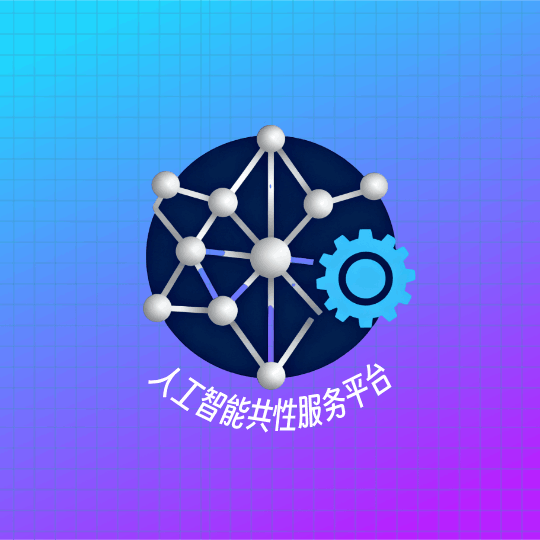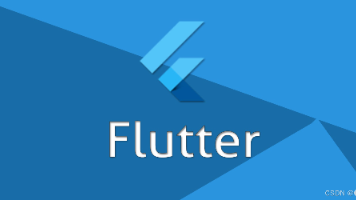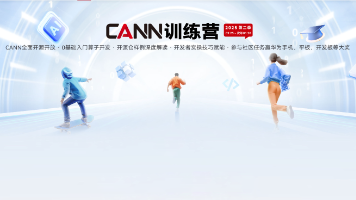Electron 应用鸿蒙化实战:架构解析与代码实现
。通过分析鸿蒙Web组件与Electron的技术融合基础,详细展示了环境配置、核心代码实现、安全权限管理等关键技术环节。文章还提供了Markdown编辑器迁移的完整案例,包括性能优化策略和调试方法。随着开源鸿蒙社区对跨平台框架的投入,这种基于Web技术的适配方案既能保留Electron开发优势,又能利用鸿蒙分布式能力,为开发者提供了高效的多端部署路径,在全场景智慧化时代具有重要实践价值。
Electron 应用鸿蒙化实战:架构解析与代码实现
深度剖析 Electron 应用适配鸿蒙操作系统的完整技术路径
引言:当桌面应用遇见全场景生态
随着华为鸿蒙操作系统(HarmonyOS)在市场中的快速崛起,越来越多的开发者面临着将现有应用迁移到鸿蒙生态的需求。对于基于 Electron 框架开发的桌面应用来说,如何实现"一次开发,多端部署",既能保留 Electron 的开发效率优势,又能充分利用鸿蒙的分布式能力,成为当前跨平台开发领域的重要课题。
本文将深入探讨 Electron 应用适配鸿蒙平台的技术方案,通过详细的架构分析和完整的代码示例,为开发者提供切实可行的实践指南。
一、鸿蒙与 Electron 的技术融合基础
1.1 为什么需要将 Electron 应用适配鸿蒙?
开发现实需求:许多企业已基于 Electron 开发了成熟的桌面应用(如 VSCode、Slack、Discord 等),希望快速扩展到鸿蒙生态而不必完全重写。技术经济性:Web 技术(HTML/CSS/JavaScript)作为最大公约数,可以大幅降低多端开发成本。生态互补:Electron 强大的桌面生态与鸿蒙的全场景分布式能力形成天然互补。
值得注意的是,开源鸿蒙社区近期已启动跨平台框架PMC的孵化,由腾讯、京东、美团、携程等企业共同参与,旨在推进 Electron 等主流跨平台框架在鸿蒙生态的技术演进。这为 Electron 应用的鸿蒙化提供了更为友好的技术环境。
1.2 技术可行性分析
鸿蒙系统自 HarmonyOS 3.0 起提供了强大的 Web 组件(@ohos.web.webview),可以加载本地或远程 Web 页面,并具备与原生代码通信的能力。这为 Electron 应用的迁移提供了技术基础。此外,华为还推出了官方的 鸿蒙 Electron(Electron for HarmonyOS),这是基于 Electron v34+ 深度改造的鸿蒙专属适配版,用鸿蒙系统 API 替代了 Node.js 运行时,并集成了鸿蒙的安全隔离机制。
架构对比表:
|
能力 |
Electron |
鸿蒙 Web 容器 |
鸿蒙 Electron |
|---|---|---|---|
|
渲染引擎 |
Chromium(Blink + V8) |
基于 Chromium 内核的 Web 组件 |
Chromium(适配鸿蒙) |
|
JS 引擎 |
V8(Node.js + Renderer) |
ArkCompiler + QuickJS |
V8(适配鸿蒙) |
|
进程模型 |
主进程 + 渲染进程 |
Stage 模型(单进程或多 Ability) |
主进程 + 渲染进程 |
|
原生能力 |
Node.js API + Native Modules |
@ohos.* 系统 API |
鸿蒙系统 API |
二、架构设计:双模块与适配器模式
2.1 整体架构设计
将 Electron 应用适配鸿蒙平台的核心是构建一个双模块架构,将 Electron 应用中的"渲染层"剥离出来,作为独立 Web 模块嵌入鸿蒙 App 中。
# 架构示意图 - 鸿蒙中的 Electron 兼容层
ohos_hap/
├── electron/ # Electron 应用主模块
│ ├── libs/ # 原生 C++ 库
│ │ ├── libelectron.so # Electron 核心库
│ │ ├── libadapter.so # 适配器桥接库
│ │ └── libffmpeg.so # 多媒体支持
│ └── src/main/ets/ # ArkTS 代码
│ ├── entryability/ # 各种 Ability 入口
│ └── pages/ # UI 页面
│
└── web_engine/ # Web 引擎适配层(HAR 库)
└── src/main/ets/
├── adapter/ # 40+ 系统适配器
├── jsbindings/ # JS 绑定层
├── components/ # UI 组件
└── ability/ # 基础 Ability 类2.2 适配器模式:桥接 Electron API 与鸿蒙系统能力
项目的核心创新在于使用适配器模式来桥接 Electron API 和鸿蒙系统能力。在 web_engine/src/main/ets/adapter/目录下,需要实现 40+ 个适配器类。
核心适配器类别示例:
// 1. 窗口管理适配器
AppWindowAdapter // 应用窗口管理
SubWindowAdapter // 子窗口管理
// 2. 输入输出适配器
MultiInputAdapter // 多点触控和手势
DragDropAdapter // 拖拽功能
// 3. 设备能力适配器
CameraAdapter // 相机
BluetoothAdapter // 蓝牙
// 4. 系统集成适配器
NotificationAdapter // 系统通知
PermissionManagerAdapter // 权限管理
// 5. UI 与显示适配器
DisplayAdapter // 显示屏幕信息
NativeThemeAdapter // 系统主题(深色/浅色模式)三、实战开发:从 Electron 到鸿蒙的完整流程
3.1 环境准备与项目结构
开发环境要求:
-
DevEco Studio 4.1+ 或 5.0.3.200+
-
HarmonyOS SDK 5.0+(鸿蒙 Electron 需要 HarmonyOS NEXT API 20+)
-
Node.js 18.17.0+(用于依赖管理)
项目结构规划:
my-cross-platform-app/
├── packages/
│ ├── electron-app/ # Electron 桌面端
│ ├── harmony-app/ # 鸿蒙移动端
│ └── shared-web/ # 共享的 Web 核心模块
├── scripts/
│ └── build-web.sh # 构建脚本
└── README.md3.2 鸿蒙端工程配置
-
创建鸿蒙应用项目:
使用 DevEco Studio 创建新项目,选择 "Application > Empty Ability",语言选择 ArkTS。
-
配置 Web 组件权限:
在
module.json5中添加必要权限:
{
"module": {
"requestPermissions": [
{
"name": "ohos.permission.INTERNET"
},
{
"name": "ohos.permission.READ_MEDIA"
},
{
"name": "ohos.permission.WRITE_MEDIA"
},
{
"name": "ohos.permission.READ_USER_STORAGE"
}
],
"abilities": [
{
"name": "EntryAbility",
"srcEntry": "./ets/entryability/EntryAbility.ets",
"skills": [
{
"entities": [
"entity.system.home"
],
"actions": [
"action.system.home"
]
}
]
}
]
}
}3.3 核心代码实现
-
主页面实现(Index.ets):
import web_webview from '@ohos.web.webview';
import promptAction from '@ohos.promptAction';
@Entry
@Component
struct Index {
private controller: web_webview.WebviewController = new web_webview.WebviewController();
build() {
Column() {
Web({
src: 'local://webapp/index.html',
controller: this.controller
})
.width('100%')
.height('100%')
.onPageEnd((event) => {
// 页面加载完成后注册 JavaScript 桥接
this.setupJavaScriptBridge();
})
}
.width('100%')
.height('100%')
}
private setupJavaScriptBridge() {
// 向 Web 注入名为 "HarmonyBridge" 的全局对象
this.controller.registerJavaScriptProxy({
// 文件保存接口
saveContent: (content: string): void => {
promptAction.showToast({ message: '内容已保存到鸿蒙设备!' });
console.info('Received from Web:', content);
},
// 获取设备信息
getDeviceInfo: (): string => {
return JSON.stringify({
platform: 'HarmonyOS',
version: '5.0',
deviceType: 'phone'
});
},
// 文件操作接口
readFile: (filePath: string): Promise<string> => {
return this.readFileContent(filePath);
}
}, 'HarmonyBridge');
}
private async readFileContent(filePath: string): Promise<string> {
// 实现文件读取逻辑
return '';
}
}-
预加载脚本适配(preload.js):
const { contextBridge, ipcRenderer } = require('electron');
// 暴露安全 API 到渲染进程
contextBridge.exposeInMainWorld('electronAPI', {
// 平台检测
getPlatformInfo: () => {
const platform = process.platform;
const arch = process.arch;
const osMap = {
darwin: 'macOS',
win32: 'Windows',
linux: 'Linux',
ohos: 'HarmonyOS'
};
const osName = osMap[platform] || platform;
return `${osName} (${arch})`;
},
// 文件操作
saveFile: (content) => {
// 在鸿蒙环境中使用鸿蒙的保存逻辑
if (typeof window.HarmonyBridge !== 'undefined') {
return window.HarmonyBridge.saveContent(content);
} else {
// 原有 Electron 逻辑
return ipcRenderer.invoke('save-file', content);
}
}
});-
渲染进程代码(renderer.js):
// 页面加载完成后初始化
window.addEventListener('DOMContentLoaded', () => {
// 检测运行环境并适配
detectEnvironment();
setupEventListeners();
});
function detectEnvironment() {
const platformInfo = document.getElementById('platform-info');
if (typeof window.HarmonyBridge !== 'undefined') {
// 运行在鸿蒙环境
const deviceInfo = JSON.parse(window.HarmonyBridge.getDeviceInfo());
platformInfo.textContent = `运行在 ${deviceInfo.platform} ${deviceInfo.version} 上`;
// 应用鸿蒙特定样式
document.body.classList.add('harmony-environment');
} else if (window.electronAPI) {
// 运行在 Electron 环境
window.electronAPI.getPlatformInfo().then(info => {
platformInfo.textContent = `运行在 ${info} 上`;
});
} else {
// 运行在普通浏览器环境
platformInfo.textContent = '运行在 Web 浏览器中';
}
}
function setupEventListeners() {
// 保存按钮事件
document.getElementById('saveBtn').addEventListener('click', async () => {
const content = document.getElementById('editor').value;
try {
if (typeof window.HarmonyBridge !== 'undefined') {
// 调用鸿蒙保存接口
window.HarmonyBridge.saveContent(content);
} else if (window.electronAPI) {
// 调用 Electron 保存接口
await window.electronAPI.saveFile(content);
} else {
// 浏览器环境处理
localStorage.setItem('draft', content);
alert('内容已保存到本地存储');
}
} catch (error) {
console.error('保存失败:', error);
}
});
}四、关键技术挑战与解决方案
4.1 无 Node.js 运行时的应对策略
鸿蒙环境不支持 Node.js 运行时,需要将 Electron 中依赖的 Node.js API 映射到鸿蒙的 @ohos模块。
API 映射表示例:
|
Electron (Node.js) API |
鸿蒙替代方案 |
|---|---|
|
|
|
|
|
|
|
|
|
|
|
使用 URL 和字符串操作 |
具体实现示例:
// 文件操作适配器
import fs from '@ohos.file.fs';
export class FileSystemAdapter {
static async readFile(filePath: string): Promise<string> {
try {
const file = await fs.open(filePath, fs.OpenMode.READ_ONLY);
const stat = await fs.stat(filePath);
const buffer = new ArrayBuffer(stat.size);
await fs.read(file.fd, buffer);
await fs.close(file.fd);
const decoder = new TextDecoder();
return decoder.decode(new Uint8Array(buffer));
} catch (error) {
console.error(`读取文件失败: ${error.message}`);
throw error;
}
}
static async writeFile(filePath: string, content: string): Promise<void> {
try {
const file = await fs.open(filePath, fs.OpenMode.WRITE_ONLY | fs.OpenMode.CREATE);
const encoder = new TextEncoder();
const buffer = encoder.encode(content);
await fs.write(file.fd, buffer);
await fs.close(file.fd);
} catch (error) {
console.error(`写入文件失败: ${error.message}`);
throw error;
}
}
}4.2 安全沙箱限制与权限管理
鸿蒙应用运行在严格的沙箱环境中,需要正确处理权限申请。
权限申请示例:
import abilityAccessCtrl from '@ohos.abilityAccessCtrl';
export class PermissionManager {
// 检查权限
static async checkPermission(permission: string): Promise<boolean> {
const atManager = abilityAccessCtrl.createAtManager();
const tokenId = undefined; // 当前应用上下文
try {
const result = await atManager.verifyAccessToken(tokenId, permission);
return result === abilityAccessCtrl.GrantStatus.PERMISSION_GRANTED;
} catch (error) {
console.error(`权限检查失败: ${error.message}`);
return false;
}
}
// 申请权限
static async requestPermissions(permissions: Array<string>): Promise<void> {
const context = getContext(this) as common.UIAbilityContext;
try {
const atManager = abilityAccessCtrl.createAtManager();
const result = await atManager.requestPermissionsFromUser(context, permissions);
if (result.authResults.every(granted => granted === 0)) {
console.info('所有权限已授予');
} else {
console.error('部分权限被拒绝');
}
} catch (error) {
console.error(`权限申请失败: ${error.message}`);
}
}
}五、性能优化与用户体验
5.1 减少 Web 容器开销
启用硬件加速:
Web({
src: 'local://webapp/index.html',
controller: this.controller
})
.hardwareAccelerated(true) // 启用硬件加速优化资源加载:
<!-- 使用鸿蒙兼容的资源加载方式 -->
<link rel="stylesheet" href="local://webapp/css/main.css">
<script src="local://webapp/js/app.js"></script>5.2 渐进式原生化策略
对于性能敏感模块,可逐步替换为 ArkTS 原生组件:
@Component
struct HybridComponent {
build() {
Column() {
// 原生顶部栏 - 更好的性能和体验
NativeNavigationBar({ title: '混合应用' })
// Web 内容区 - 快速迭代和代码复用
Web({
src: 'local://webapp/main-content.html',
controller: this.webController
})
.height('80%')
}
}
}六、实战案例:Markdown 编辑器迁移
以下是一个完整的 Markdown 编辑器从 Electron 迁移到鸿蒙的示例。
6.1 项目结构
markdown-editor/
├── shared/ # 共享代码
│ ├── lib/
│ │ └── markdown-parser.js # Markdown 解析核心
│ └── assets/
│ └── themes/ # 主题文件
├── electron/
│ └── src/
│ ├── main.js # 主进程
│ └── preload.js # 预加载脚本
└── harmony/
└── src/
├── main/
│ └── resources/
│ └── rawfile/
│ └── webapp/ # Web 资源
└── entry/
└── src/
└── main/
└── ets/
└── EntryAbility.ets # 鸿蒙主入口6.2 核心功能实现
鸿蒙端 Markdown 处理器:
import fileIO from '@ohos.file.fs';
export class MarkdownProcessor {
// 渲染 Markdown 为 HTML
static async renderMarkdown(content: string): Promise<string> {
// 使用共享的 Markdown 解析库
const parser = await import('local://webapp/lib/markdown-parser.js');
return parser.render(content);
}
// 导出 HTML 文件
static async exportHTML(markdownContent: string, outputPath: string): Promise<boolean> {
try {
const htmlContent = await this.renderMarkdown(markdownContent);
await fileIO.writeText(outputPath, htmlContent);
return true;
} catch (error) {
console.error(`导出失败: ${error.message}`);
return false;
}
}
}完整的鸿蒙页面组件:
@Entry
@Component
struct MarkdownEditorPage {
private controller: web_webview.WebviewController = new web_webview.WebviewController();
@State editContent: string = '# 欢迎使用 Markdown 编辑器';
build() {
Column() {
// 顶部操作栏
Row() {
Button('保存')
.onClick(() => this.saveContent())
Button('导出')
.onClick(() => this.exportContent())
}
.padding(10)
.width('100%')
// Web 编辑器区域
Web({
src: 'local://webapp/editor.html',
controller: this.controller
})
.onPageEnd(() => {
this.injectContent();
})
}
}
private async saveContent() {
// 调用 Web 页面获取编辑内容
const content = await this.controller.runJavaScript('getEditorContent()');
if (content) {
// 使用鸿蒙文件 API 保存
const saved = await this.saveToHarmonyFS(content);
if (saved) {
promptAction.showToast({ message: '保存成功' });
}
}
}
}七、调试与测试策略
7.1 跨平台调试技巧
鸿蒙端调试:
// 启用 Web 调试
Web({
src: 'local://webapp/index.html',
controller: this.controller
})
.webDebuggingAccess(true) // 启用调试功能统一日志系统:
export class Logger {
static info(message: string, data?: any) {
console.info(`[Harmony-Markdown-Editor] ${message}`, data || '');
// 同时发送到远程日志系统(可选)
}
static error(message: string, error?: Error) {
console.error(`[Harmony-Markdown-Editor] ERROR: ${message}`, error || '');
}
}总结与展望
将 Electron 应用适配到鸿蒙平台是一项复杂但有价值的工作。通过 Web 技术作为桥梁,结合适配器模式和模块化设计,可以实现在保留现有 Electron 投资的同时,拥抱鸿蒙生态的巨大潜力。
未来,随着鸿蒙对 Web 标准支持的不断完善,以及开源鸿蒙社区对 Electron 等跨平台框架的持续投入,Web 技术将在鸿蒙生态中扮演更加重要的角色。对于开发者而言,掌握这种跨平台适配能力,将在全场景智慧化时代占据先机。
技术的价值不在于站队,而在于解决问题。Electron 与鸿蒙的融合,正是这种实用主义精神的完美体现。
更多推荐
 已为社区贡献4条内容
已为社区贡献4条内容









所有评论(0)